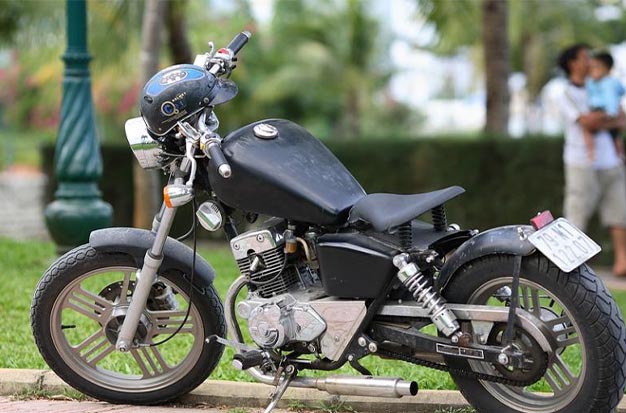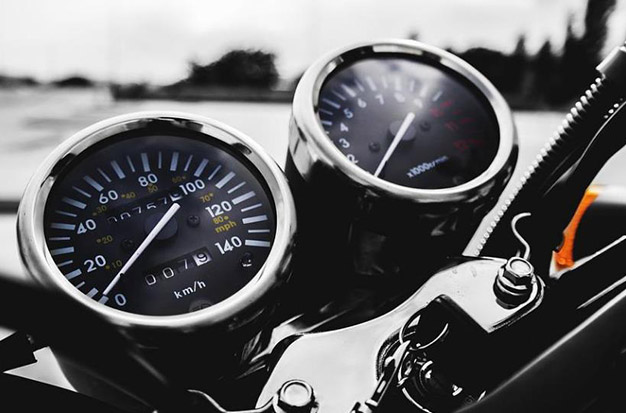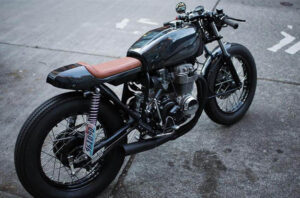Shifting gears is one of the most crucial aspects of motorcycling. Although it may seem difficult to learn, changing gears is actually a straightforward process. However, whether your motorcycle has a manual transmission or a semi-automatic transmission will determine how you shift gears.
The experience of riding a motorcycle will be significantly more thrilling if you know how to smoothly shift gears. In order to help you become more adept at shifting gears on motorcycles with manual transmissions, we’ll provide you with some techniques in this article.
The Location Of The Motorcycle Shift Lever
On a motorcycle, the shift lever is typically found at your left foot. Footpegs, which are essentially brief metal rods, are a standard feature on sportbikes and dirt bikes. On a bike, the shift lever is located directly in front of your left foot if you sit down and put your feet on the footpegs.
How Do Motorcycle Gears Operate?
Low-powered motorcycles may only have two gears, and motorcycles with manual transmissions typically have four to six gears, depending on the make and size. The lever on the left pedal shifts forks inside the transmission when you engage the gears.
You must first depress the clutch lever with your left hand in order to transfer power away from the engine and into the transmission before you can shift the gears up or down. Release the clutch after selecting the gear for the bike to regain contact with the crankshaft and gain momentum.
After some practice, you’ll be able to shift gears on your motorcycle without stalling because you’ll have developed a second-nature sense of how to coordinate the clutch and gear shift.
What Factors Determine A Motorcycle’s Smooth Shift?
manual transmission motorcycle engine
It’s much simpler than it looks to smoothly shift gears on a motorcycle. To make a smooth transition, you must have a solid understanding of how the throttle and transmission of your motorcycle operate.
Additionally, you must pay close attention to how your motorcycle responds each time you change gears. If your bike jerks as you let go of the clutch, there may not be a smooth transition from the transmission to the throttle because you let go of the clutch too quickly.
On the other hand, you may not be revving the engine enough to maintain momentum if the motorcycle slows down while shifting. If you happen to stall in the process, release the clutch once more, turn the bike on, and shift into first gear to get going.
Once you become accustomed to riding your bike, you’ll be able to shift gears much more quickly and with less effort. Let’s get started. I’ve listed below how to shift gears on manual and semi-automatic motorcycles.
How To Shift Gears On A Motorcycle?

The fundamental steps of a good shifting technique are listed below in case you are a complete beginner.
From A Stop
- Pull the clutch all the way in with your left hand while the engine is running and the throttle is closed.
- Your left foot should be used to downshift into first gear. The transmission should engage in gear with a satisfying click.
- Release the clutch gradually with your left hand while simultaneously (and gently) rolling the throttle open with your right hand until the motorcycle starts to move forward.
- Release the clutch with your left hand gradually as you continue to open the throttle with your right hand and the bike gains speed. You have started traveling!
Upshifting While Moving
- With your right hand, roll the throttle all the way down.
- Use your left hand to pull the clutch lever in.
- Use your left foot to accelerate into the next gear. As before, you should hear the transmission click into gear. You are in neutral between first and second gear if you release the clutch and the bike doesn’t move forward. Reset the shifter to up and engage the clutch.
- With your right hand, reopen the throttle while gradually releasing the clutch with your left.
Downshifting While Moving
- Put your right hand on the throttle and roll it closed.
- With your left hand, pull the clutch lever toward you.
- Use your left foot to downshift into the subsequent lower gear.
- With your left hand, slowly release the clutch lever. Roll the throttle open as you release the clutch if you are downshifting for a hill or to enable faster acceleration. However, if you’re downshifting to prepare for a stop, you only need to add enough throttle to match engine revs to your road speed so the bike slows down gradually.
Coordinating these actions will initially require deliberate thought and may feel awkward. Riders frequently move too quickly. Keep in mind that you only use your wrist (not your entire arm) to control the throttle and that you should push quickly and purposefully with your foot to execute shift actions.
You can be confident that with practice, all of these motions will become more fluid and that time shifting will become so second nature that you won’t even notice it.
Refining Your Understanding, And Your Technique
If those shifting CliffsNotes weren’t enough for you, let’s delve a little deeper and learn more about the mechanics of shifting so you can do it more effectively.
Power is transferred from the crankshaft to the transmission, then to the final drive (which may be a chain and sprockets, belt and pulleys, or shaft), and finally to the rear wheel to propel a motorcycle down the road. The clutch, which sits between the crankshaft and the transmission and acts as a progressive coupling mechanism between the two, connects the two.
We change which pair of gears the power flows through when we talk about shifting gears, so the phrase is appropriate. There is a load on the gear faces when the bike is accelerating on the gas or slowing down as a result of engine braking. For the gears to change positions, this load needs to be reduced.
The clutch enters the picture here. By releasing the clutch, you unload the transmission, allowing the cogs to shift into the next position. This action also releases the crankshaft from the transmission. The clutch lever is fully engaged when it is out, and as you pull it all the way in, the crankshaft and transmission become fully disengaged.
The clutch must be completely disengaged in order to shift into gear from neutral or to stop while in first, but once you’re moving, you can change gear without fully extending the clutch lever.
“Fanning the clutch refers to quickly and partially pulling the lever to momentarily unload the transmission so you can shift up or down into the next gear. Given that it enables quicker, smoother shifting, it’s a crucial technique.
As it happens, there is a way to shift even more quickly without using the clutch at all.
Quick Tips For A Smooth Shift
- Squeeze the clutch lever all the way in with your left hand to release the clutch.
- Using the gear shift lever, choose the appropriate gear (pull it up to shift to a higher gear, tap down to shift to a lower gear).
- Turn on the throttle by slightly turning your right wrist in the direction of you (beginning with your wrist flat).
- While gently and steadily rolling on the throttle with your right hand, the motorcycle will accelerate as you gradually release the clutch lever with your left hand (do not pop it suddenly).
- Once the clutch is fully released, accelerate until your engine speed is equal to your ground speed. To change to a different gear, repeat the procedure.
Closing Tips
- Practicing is essential. Try to find a secure area with lots of open space that is free of traffic and other hazards—preferably one that is paved.
- The clutch lever is your trusted companion. Squeeze and hold the clutch lever firmly in place to completely disengage the power transfer from the engine to the rear wheels if you accelerate too quickly or if you are simply uneasy about your driving technique. After that, turn on the engine cutoff switch with your right thumb.
- Pay attention to your motorcycle. When it’s time to shift, it will let you know. You should have shifted into a higher gear sooner if it is screaming, as you did not wait long enough. You should have downshifted to a lower gear sooner if it feels like it is choking.
- Wear your safety gear at all times.
Conclusion
In conclusion, it takes some practice to learn how to shift gears on a motorcycle when you first start out. The fun of owning a motorcycle is honing your riding skills, which gives you assurance on the road.
You might want to think about getting a semi-automatic or automatic motorcycle if you don’t enjoy changing gears. They are excellent for individuals who require a simpler method of commuting because they are significantly easier to ride.
Overall, we hope that this article has demystified motorcycle gear shifting and that the tips it has provided will make you a better rider.



